Osaka comes into its own: Step into a video game at Super Nintendo World, explore new sights
Sign up now: Get ST's newsletters delivered to your inbox
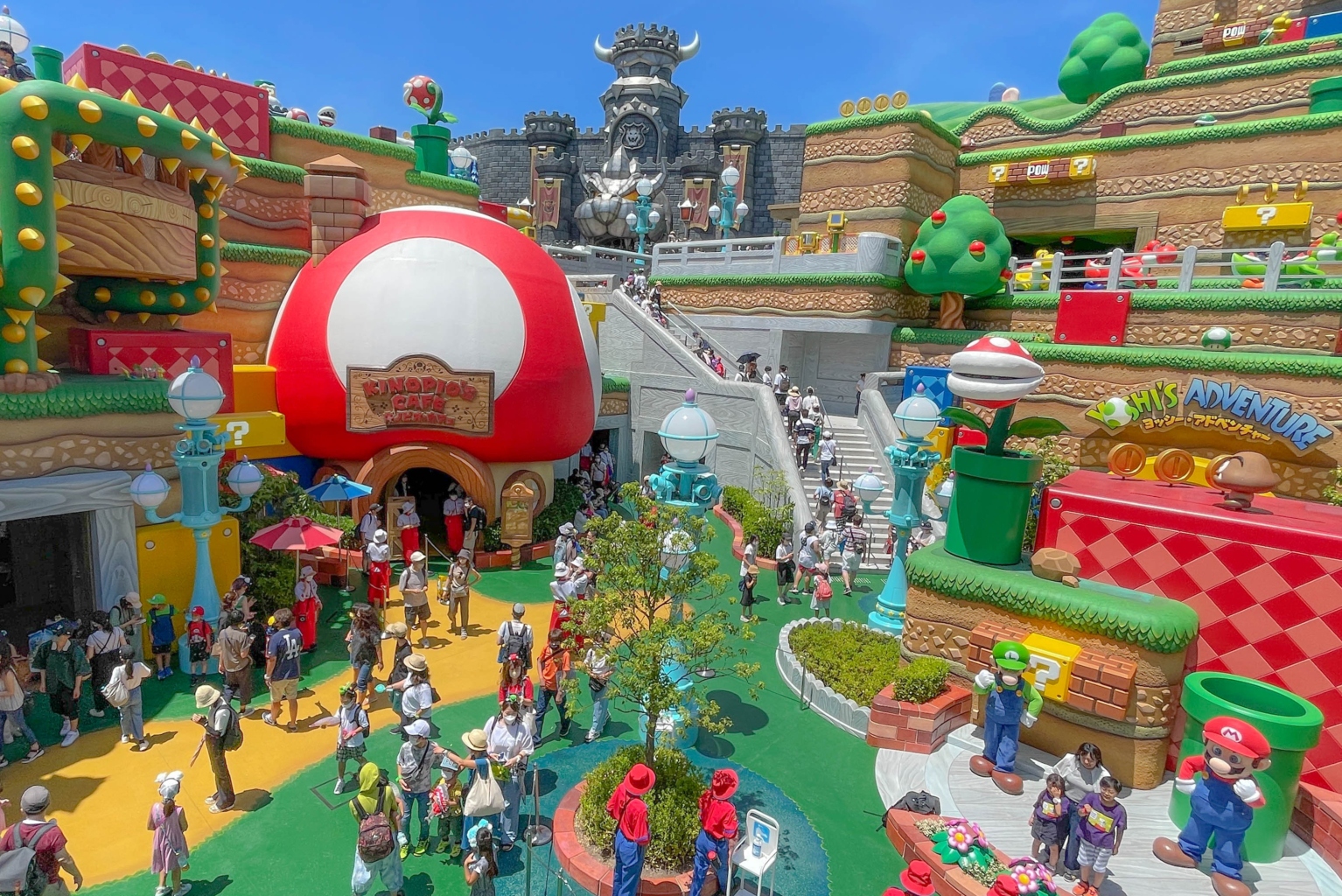
Universal Studio Japan's Super Nintendo World.
PHOTO: KLOOK
Karen Tee
Follow topic:
OSAKA - It is though I have stepped into a video game. After a madcap rush through the sprawling park grounds of Universal Studios Japan in Osaka (from $86.35 on Klook) to get to its latest attraction Super Nintendo World in time for my pre-booked entry, I am more than a little discombobulated by the sensory overload.
Here, I am surrounded by buildings created in the likeness of those in the Super Mario game of my childhood, such as Princess Peach's castle and Yoshi's house.
There are human-size pipes, reward blocks, piranha plants all in the hyper-saturated hues of the original game. It makes me - a fully grown, sensible adult - feel like jumping in the air just like the main characters Mario and Luigi.
The main Mario Kart Koopa's Challenge ride, an augmented-reality(AR) game meets go-kart ride, is even more riveting. We are given plastic Mario hats, to which a nifty AR visor is attached, once we are seated.
Then the fun really begins as we fire turtle shells at the bad guys and collect rewards while the Kart careens wildly along a track.
It is possibly the most high-tech, interactive theme park ride ever created thus far, and judging by the joyful looks of my fellow riders at the end of those precious few minutes, I am not the only one who is amazed by this boundary-pushing ride.
There is no doubt this theme park within a theme park - a similar concept to the Wizarding World of Harry Potter - is already a runaway success.
Even though it opened in Universal Studios Japan last year in the middle of the pandemic and travel regulations continue to restrict the number of tourists to the country, it is already swarming with local visitors who cannot get enough of this immersive world, the fun rides and, of course, the excellent merchandise.
But unlike the super fans who are here to live out their video game fantasies, I am here for work.
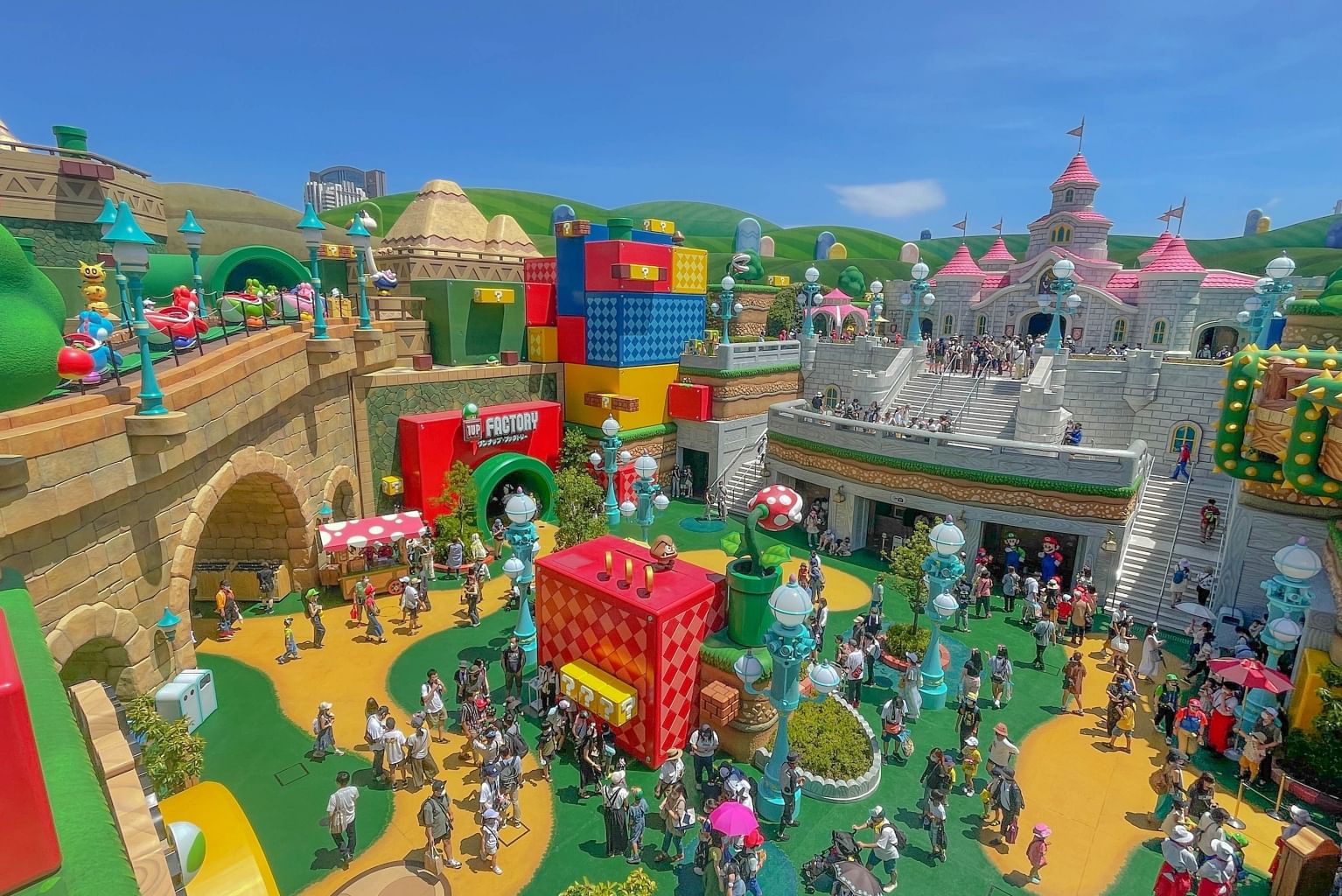
In anticipation of Japan eventually relaxing its border regulations - leisure travellers can currently only follow guided itineraries - travel activity company Klook has arranged for some members of the press to visit Osaka on a business visa.
The main difference between a tourist and business visa is that those on the latter visa do not require a guide and have more autonomy to enjoy free and easy time in between work commitments.
That said, my sightseeing schedule is jam-packed, leaving me with precious little time off - not that I am complaining.
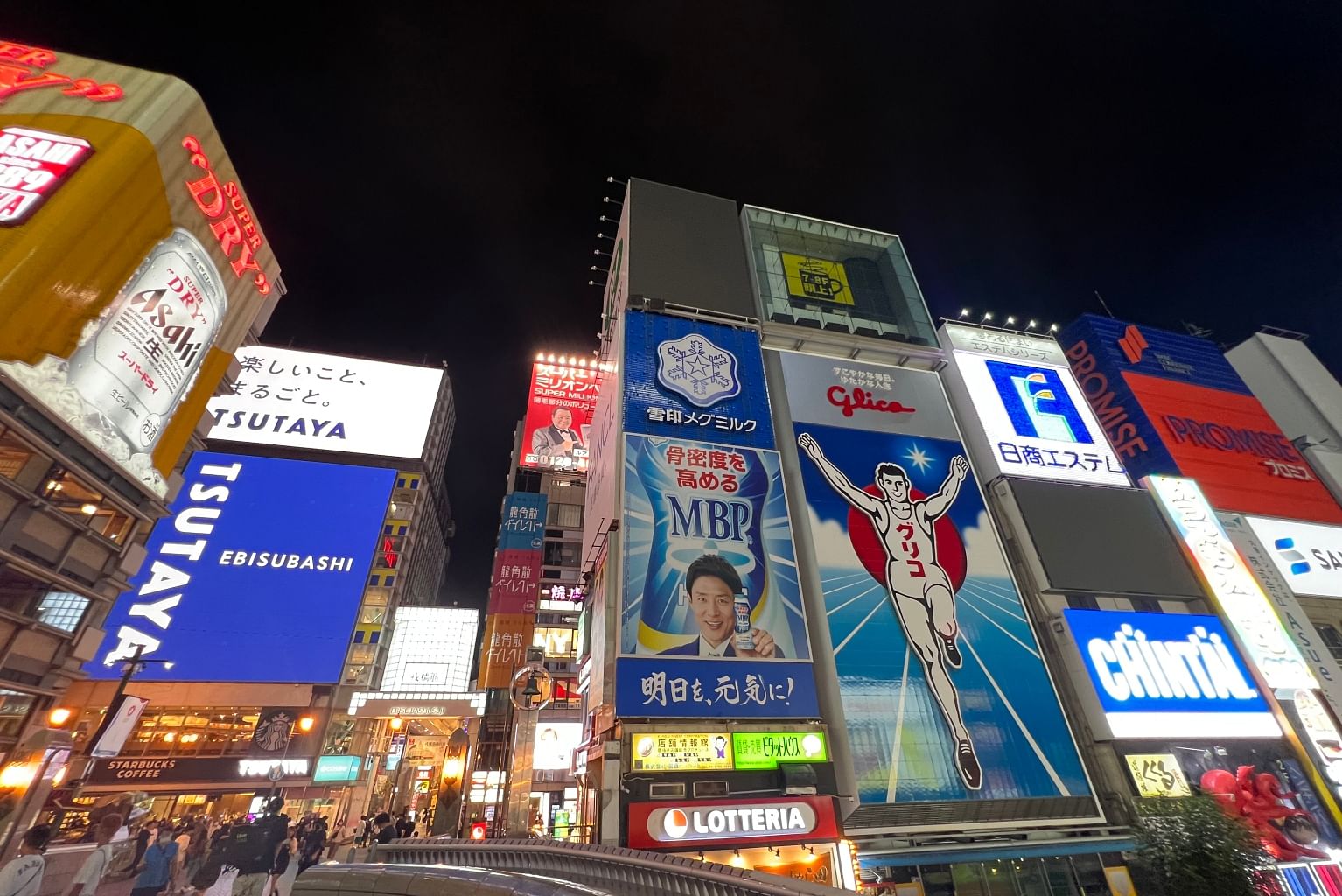
Media reports last week (Aug 23) indicated that Japan will more than double the number of people allowed to visit the country and may scrap the need for a negative Covid-19 test to enter.
Although bustling Osaka has typically been somewhat overshadowed by the glitzier Tokyo, it is poised to step into the global spotlight in the next few years. It is hosting the high-profile World Expo in 2025 and MGM Resorts is planning to build an integrated resort in the city.
This increased international exposure is likely to draw even more travellers to this city on the cusp of a transformation.
Impressive skyline
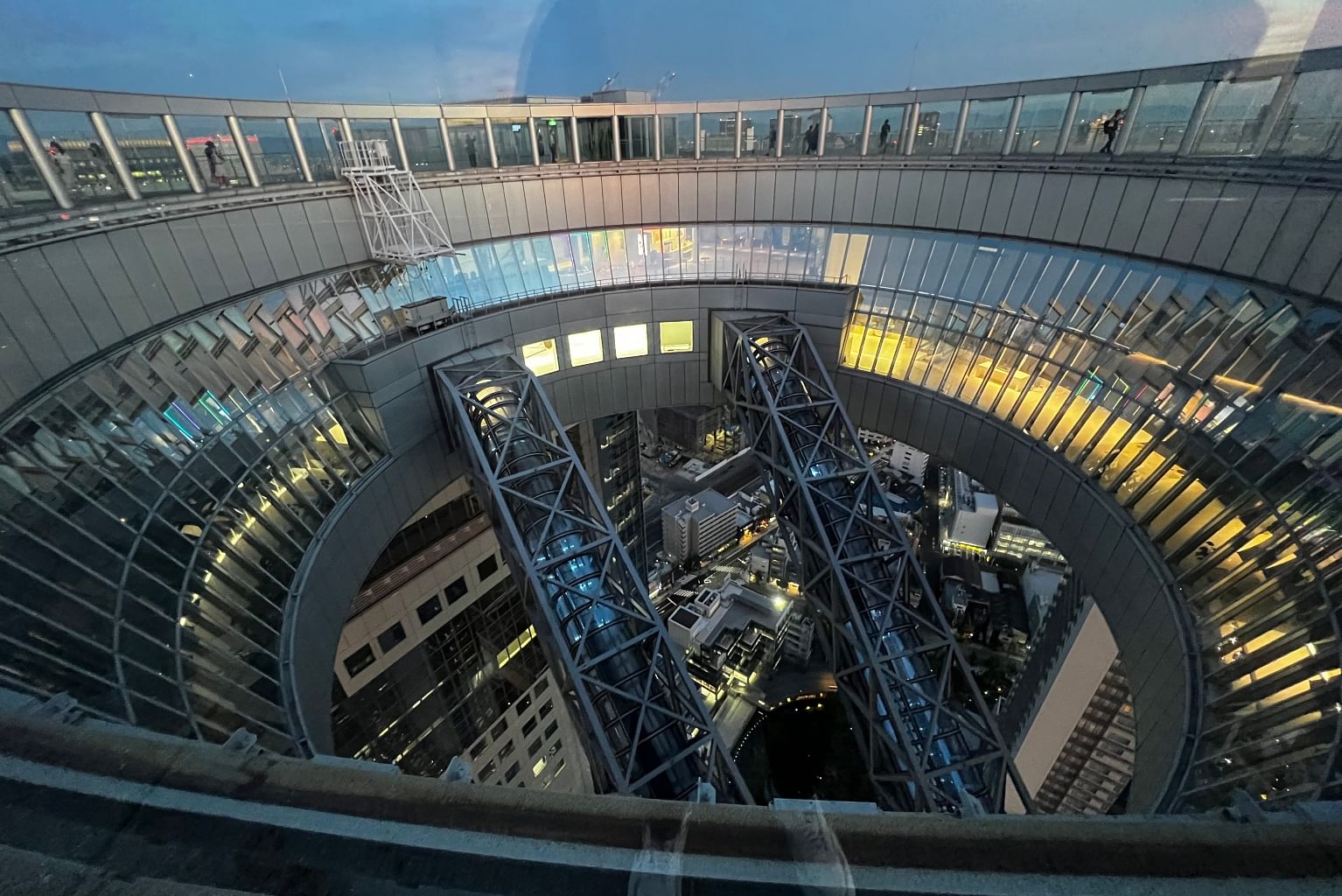
To marvel at Osaka's sheer scale, the only way to go is up - to some of the most heart-stopping sky observatories around.
In fact, getting to the futuristic floating Kuchu Teien observatory on the 39th floor of the Umeda Sky Building (from $15.45 on Klook) is already an adventure that only the brave-hearted should attempt.
After a bubble lift ride to the 35th floor, we take a three-storey escalator ride up a glass tunnel to get to the observatory entrance.
The dizzying view soon gets my head spinning and I chicken out, beating a hasty retreat back to the first floor via the (enclosed) staff lift.
For those who are made of sterner stuff, there is another daredevil-worthy observatory on the 60-storey-high Harukas 300 ($15.45 on Klook).
Located at Abeno Harukas, the tallest skyscraper in Osaka at 300m, it boasts adrenaline-pumping features like glass floors, and there is an option to step out onto a helipad on the roof.
As for me, I am happy to keep my explorations closer to ground level.
One dramatic addition to the city's already eye-catching urban cityscape is the year-old W Osaka.
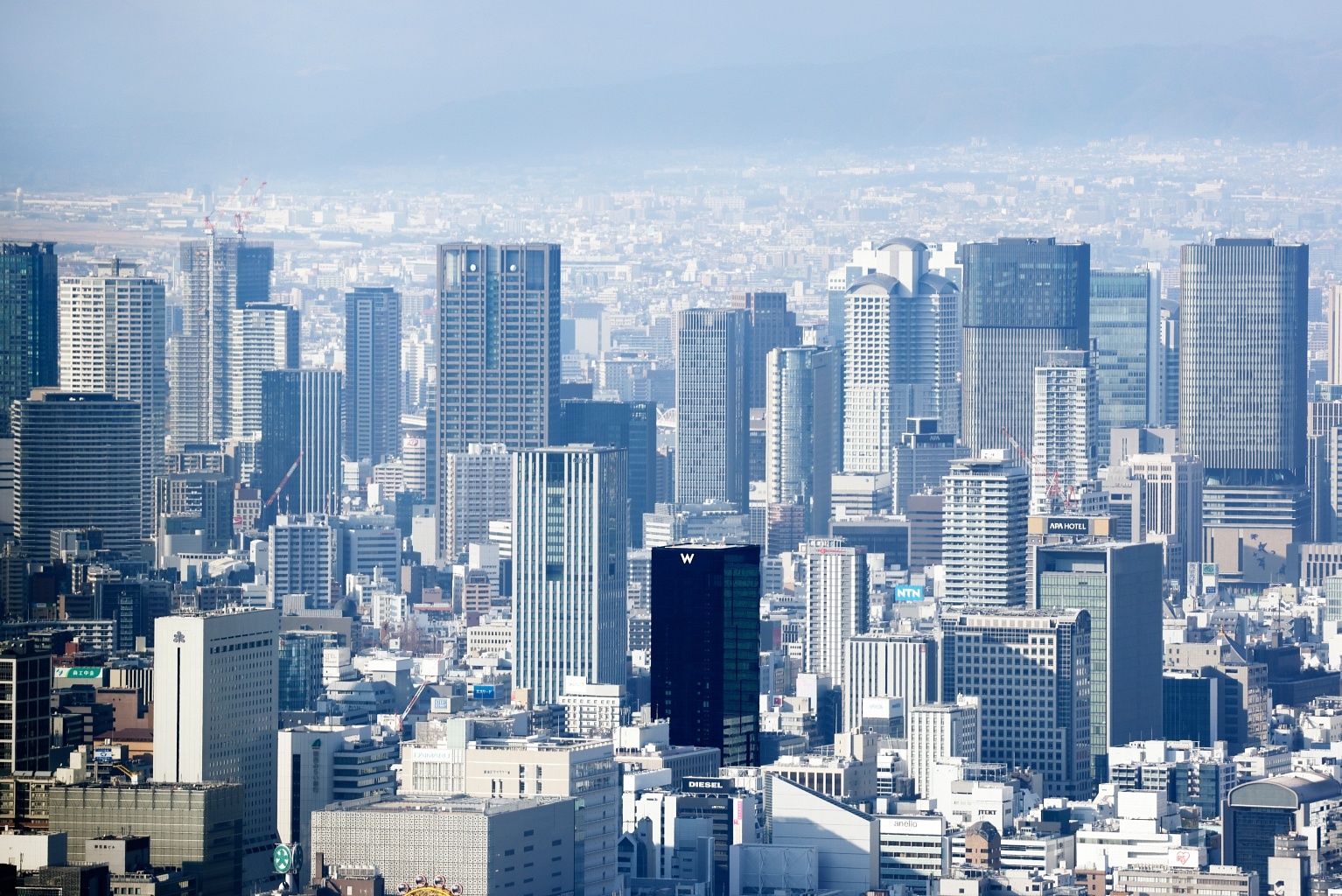
Located on the vibrant Midosuji Boulevard, the city's main north-south thoroughfare, the hotel is in a neighbourhood so packed with international designer labels, it is known as the Champs-Elysees of Japan.
Against the mostly white facades of nearby buildings, the stark black monolith facade of the 27-storey building designed by renowned Osaka-born architect Tadao Ando is quite the showstopper.
Within, the exteriors, like other W Hotels around the world, explode in a carefully orchestrated riot of colours and flourishes, many of which are inspired by the city's own inimitable characteristics.
For instance, a light art installation of an exercising man in the gym is a play on the iconic Glico man billboard in the Dotonbori entertainment and street food area that is an easy 15-minute walk away.
Local discoveries
To my disappointment, when I brave the notoriously stifling summer heat to visit Dotonbori after dinner one night, the area is surprisingly quiet. Most of the street food stalls, which Osaka is famed for, are closed.
I was later told this could be because I was visiting during a surge in infections, leading to civic-minded locals voluntarily staying away from crowded hot spots to help keep numbers down.
Still, even though the Glico man sign is not lit up, it does not stop the occasional passers-by from gamely posing for a photograph in front of it.
A meal at the W's Teppanyaki Mydo restaurant does help make up for missing out on my street-food fix.

Chef Yoshiaki Hayami has a knack for bringing a creative spin to favourites such as by cooking takoyaki (flour batter and octopus shaped in a ball) in a teacup.
He does a well-received vegan gyoza with an irresistible crispy lattice base.
Of course, there are many other delectable eateries to sample Osaka's culinary delights. As always, my favourite way to uncover lesser-known haunts is to look for where the locals congregate and then follow suit.
That was exactly how I discovered gastrobar Akaso, which focuses on comforting versions of oysters and beef, such as a melt-in-your-mouth beef sando and oyster ochazuke (rice in a tea and dashi broth).
Another after-dark activity worth checking out is the new permanent night-time exhibition by art collective teamLab at the Nagai Botanical Garden ($16.45 on Klook).
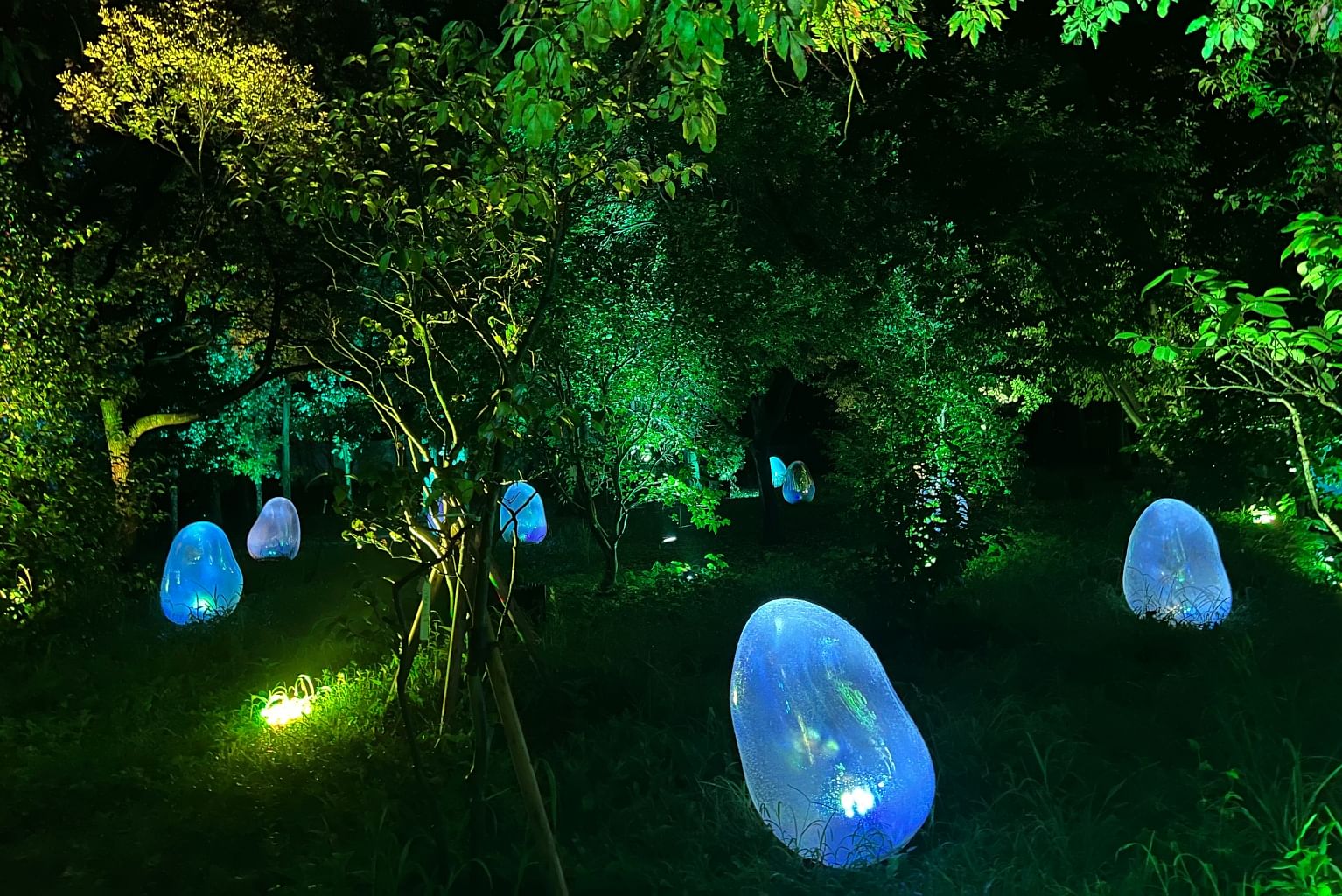
The group, which has previously done light installation and animation exhibitions in Tokyo and Singapore, including at the ArtScience Museum, has transformed the botanical garden into an ethereal, Studio Ghibli-esque dreamscape by adding abstract light structures to different sections of the gardens.
As with many attractions these days, the space is artfully designed for maximum social media impact, so expect to jostle with smartphone-toting crowds as you make your way through the garden.
Or better yet, put the mobile phone away and simply allow yourself to get caught up in the otherworldly beauty of the park.
Do not miss this
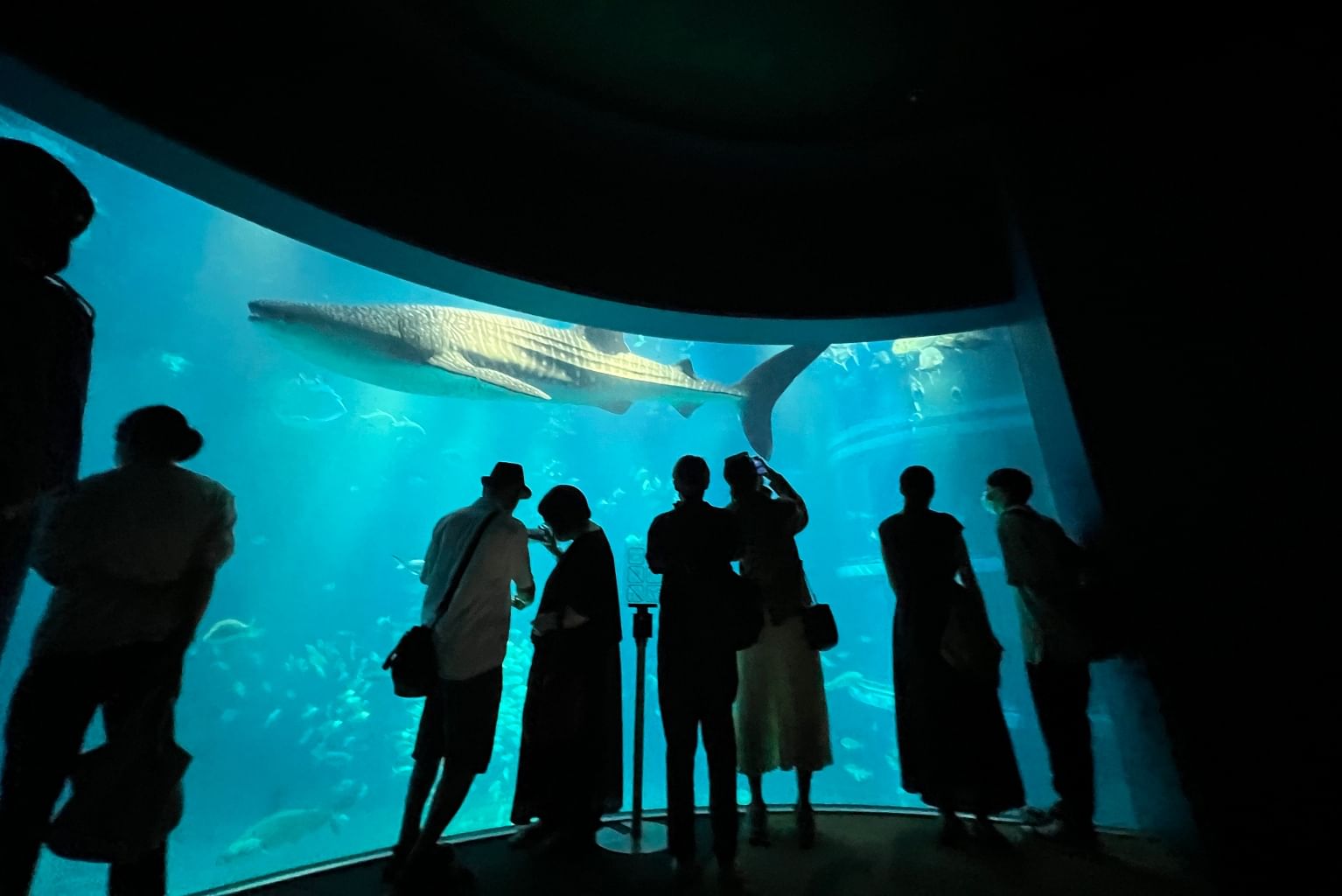
Yet, for all these newfangled attractions, if there is one place you must not leave without visiting, it would be the oldie but goldie, the Osaka Aquarium Kaiyukan (¥2,400 or S$24.40).
Widely regarded as one of the best in the world, the eight-storey aquarium has 27 tanks representing the marine environments of the Pacific Rim.
One of the main crowd-pleasers is the massive 9m-deep Pacific Ocean tank which houses whale sharks, the largest fish alive today.
More understated but equally fascinating are the Japan Deep and Seto Inland Sea tanks, which offer a glimpse into the thriving underwater ecosystem in the bountiful waters of this region.
The former features deep-water inhabitants like the alien-looking Japanese spider crabs, known to be the largest variety in the world, while the Seto Inland Sea tank is regarded as the starting point of aquaculture fisheries.
I am not quite ready to give up seafood yet, but being there does allow me a moment to better appreciate the origins of my food.

After this moment of introspection, I stop by the meditative jellyfish exhibit to admire the sea creatures calmly bobbing along before ending up at the attention-grabbing ringed seal tank where a small crowd has gathered.
Three chubby ringed seals, including a juvenile born just a year ago, take turns to peer at us curiously, with expressions resembling cheeky smiles on their faces.We lap it all up and I cannot help but squeal in sheer delight: "Kawaii."
How to get the most out of your visit to Universal Studios Japan
1. On top of the Studio Pass admission ticket, it is worth splurging on a Universal Express Pass (from $163) as it gives access to an express queue instead.
But if you happen to be on a solo trip, save the money and tell the park attendants you are "single".
You will be directed to the front of the line for most rides and given the next available space with other odd-numbered groups.
2. Do book free timed-entry e-tickets via the Universal Studios Japan app for ultra-popular rides like The Wizarding World of Harry Potter and areas such as Super Nintendo World, as they may temporarily stop accepting walk-ins if capacity limits are reached.
3. Visitors are required to keep their masks on at all times, both indoors and outdoors, unless they are eating or drinking. So take along spare fresh masks to replace the one you are wearing when it gets too sweaty.
4. Resist the urge to load up on souvenirs when you exit each ride or you could end up lugging shopping bags all day. Most popular items are available at the cluster of shops in the Hollywood area of the park, which you will pass by on your way out.
5. If you take along your passport, you can get a tax refund of 6.7 per cent (Universal Studios Japan charges a 3.3 per cent handling fee) for applicable purchases at Studio Gift West near the exit.
There were no queues during my visit, but expect lines to form once entry requirements are further relaxed and more travellers return to Japan.
Where to stay

For a change from typical business hotels, which are perfectly serviceable but can sometimes lack character, check into the W Osaka to soak in the designer atmosphere of this luxury boutique hotel.
The rooms (rates from ¥45,000 or S$458) feature a more restrained aesthetic compared with public areas like the lobby, but the party vibe can easily be dialled up with a change in mood lighting.
If you are in the mood to treat yourself, book the corner Marvelous King Suite for expansive views, a spacious separate living and dining room and an oversized bathtub that overlooks the city.
- A former Straits Times journalist, Karen Tee is now a freelance lifestyle and travel writer.
- This trip was hosted by Klook and partially hosted by W Osaka.

